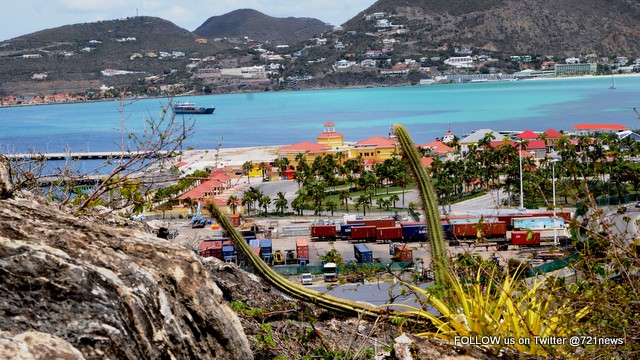PORT ST. MAARTEN – The Caribbean region as the largest cruise destination of the industry is still waiting for the resumption of cruise, and this would also include Port St. Maarten as one of the primary ports of call in the north eastern Caribbean.
Friday, March 12 marks one-year since the last commercial cruise call to Port St. Maarten due to the COVID-19 pandemic.
“No one initially thought that the cruise business would have been interrupted beyond a year. We have taken the time during the pandemic to further strengthen our internal compliance protocols and procedures and business resumption planning, thereby becoming more resilient, and proactive while remaining connected with our local and international stakeholders as we look forward to rebounding stronger when the resumption of cruise tourism sets sail,” Port St. Maarten Management said on Thursday.
Port Management: “The Port is very thankful to the staff for their contributions and commitment through the pandemic. This has been a difficult period for everyone, and staff well-being were our number one priority. Last September a number of staff took part in a mental health workshop titled, ‘Surviving the Pandemic.’ The program provided tools to assist staff to navigate through the COVID-19 pandemic challenges.”
The general consensus is that things are looking positive especially coming out of the United States, where the pace of COVID-19 vaccine inoculations are on the increase and the infection curve has been dropping leading to less hospitalizations and deaths.
The cruise industry continues to await guidance from the U.S. Centers for Disease Control and Prevention (CDC), one of the major operating components of the U.S. Department of Health and Human Services protecting Americans from health and safety threats, both foreign and domestic.
The cruise industry is currently waiting on the technical details that would allow for the first conditional sail order and trial sailings to begin.
Discussions within the United States Government have been taking place on a broader level that encompasses travel in general – plane and cruise.
In the meantime, Port St. Maarten attended on March 3 a meeting with the Florida-Caribbean Cruise Association (FCCA) under the banner of, “Americas Cruise Tourism Task Force.” The Cruise Lines International Association (CLIA) was also a key partner that attended the virtual sessions.
The Caribbean remains the number one cruise region which will be critical to cruising’s recovery as it is the largest cruise line deployment region out of the global market, capturing 32 per cent of the cruise business.
American market consumer research reveals that as it relates to cruise, are the most optimistic about the future since the beginning of the pandemic, and believe that the worst is behind us, and are looking forward to traveling.
Destinations within the region including Sint Maarten, are wondering how the restart of cruises will look like. Port St. Maarten has been paying very close attention to trends and developments in order to be ready for the restart of cruising. The port will be launching a cruise return campaign sharing key business intelligence with its stakeholders.
Some cruise brands have announced ‘vaccine-only’ cruises, as an example.
There has also been mention of a cruise bubble within the region, maintaining current COVID-19 health preventative protocols and testing to the gradual reopening of destinations and post-vaccine plans.
Due to the pandemic, the cruise industry has approximately 60 ships in the region with around 6,000 crew onboard. Port St. Maarten during the past 12-months has been providing a number of services to the cruise vessels that have made port calls for food and fuel provisioning as well as assisting with the crew transfers (in and out) to other countries via the Princess Juliana International Airport regularly.
The aforementioned provisioning services have benefited the island economically within the past 12-months as we continue to look at alternative avenues to generate revenues from commercial and non-commercial sectors.





























